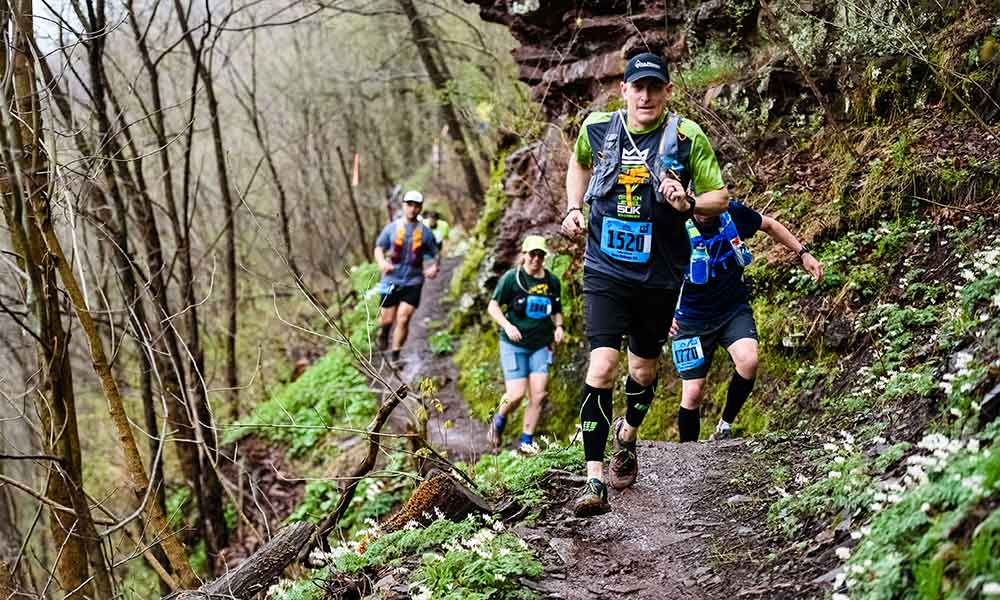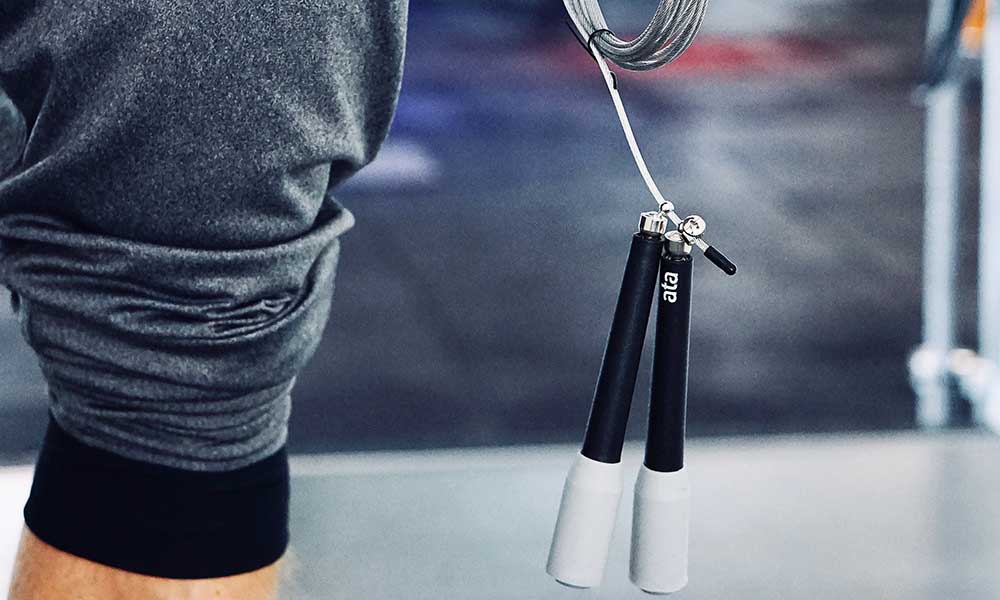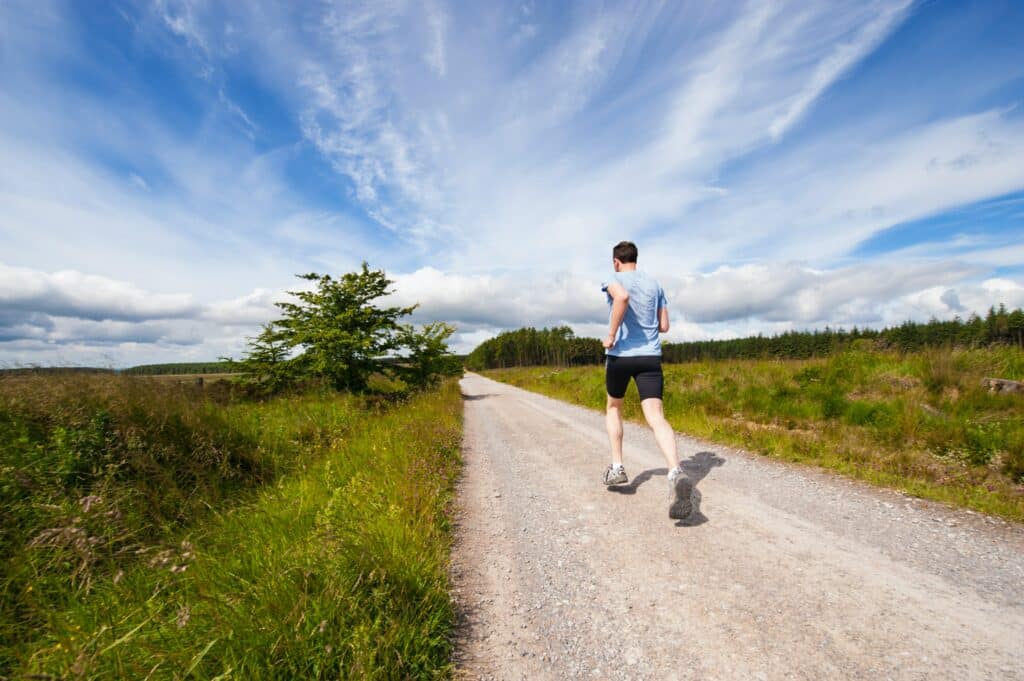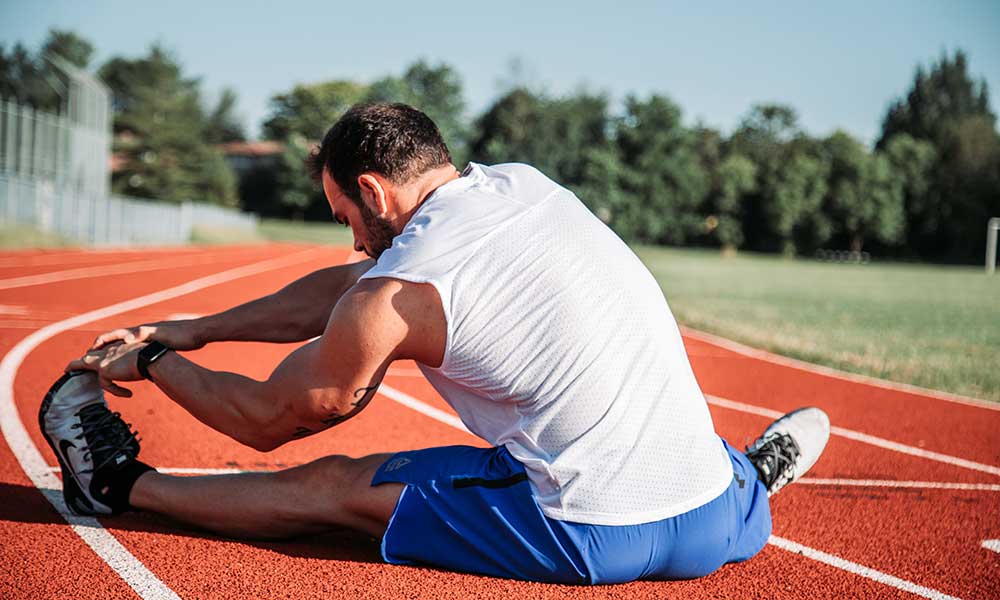The road to trail running can be a physically grueling one, but one that will literally transform you, make you stronger and leave you wanting to come back for more. Whether you’re training for a trail race or you just want to go a longer distance, running the trails is a great way to connect with nature, see beautiful places, disconnect from the busyness of life and to get into incredibly good physical and mental shape, not to mention raise your fitness level.
So whether you’re a beginning runner or an experienced runner hoping to transition to the trails, this article will provide helpful tips on how to start trail running and get stronger on the trails so you can fully enjoy this unique and rewarding sport.
How do you train for trail running?
The best tip for trail running training is to just find a beaten path with some hills and give it a shot. You will be challenged with uneven and technical terrain, undulating hills and twists and turns that you may not be used to if you’re already running on roads. In the beginning, it’s normal to find yourself running a bit slower, but as most trail runners will tell you, having a training plan and starting with an easy pace as your body adapts is a great place to start.
Trails come in all shapes and sizes and different terrains. Aside from being in natural beauty and peaceful environments, the natural terrain of trails is actually a lot softer on your joints than running on pavement. This leads to decreased recovery time and less joint pain during and after your run.
You will be engaging your muscles in new ways out on the trail, so a mix of cardiovascular training and strength training is key to enjoying your time out there, as well as adequate rest so you can recover and get back out on the trail stronger every time.
Muscle training
As you navigate the trail environment, your quads, glutes, calves, hamstrings and heart—yes, the heart is a muscle and we’ll touch on it in a bit—will all be called on to perform at their best. The good news is that all of the exercises provided just below will be great for the specific muscles listed, but will cross over into the other muscle groups, as well as strengthen your core. Let’s discuss some of the most important muscle groups for trail running and we’ll also give you a few training tips along the way.
Glutes
Your glutes are the three muscles that make up your butt. These muscles are what keep your hips and pelvis stable as well as improve your posture and balance. When running through the challenges of the trail, these are some of the most critical muscles to keep strong and healthy especially with your lateral movements.
Glute Exercises:
Side leg lifts, side planks, single leg glute bridges and leg lifts will help target those glutes so you’re as stable as possible while you navigate the trail.
Quads
Your quads are the muscles on the front of your thigh, made up of four different muscles. This group of muscles is responsible for your basic movements such as walking and running, not to mention squats and jumping. They are also key to your knee stability. Your quads are also very helpful in braking as you run downhill.
Quad Exercises:
Deadlifts, squats and lunges are all great exercises to strengthen your quads. Using weights or bands with your squats and lunges to increase tension will also help you to grow these muscles stronger.
Hamstrings
Your hamstrings are the muscles on the back of your thigh. This group of three muscles helps you as you stride, controlling the swing of your lower leg as it moves forward until your foot touches the ground. To gain speed and endurance, you will need to pay special attention to your hamstrings.
Hamstring Exercises:
Single-leg deadlifts, leg curls, and Nordic hamstring curls will help you target those hamstring muscles in your workout and get you moving at a faster pace as you run. Calves
Your calves are the two muscles on the back of your lower leg. These are what propel you forward and are absolutely critical when you are trail running to get you up those tough climbs and provide ankle stability as you travel on unstable terrain, rocks, gravel, or soft dirt.
Calf Exercises:
Calf raises are great for your calves. You can do single-leg, both legs or sitting calf-raises. As you grow in strength, you can hold weights or use tension bands. Running, hiking and walking—especially up hills—are excellent for calf strength as well.
Heart
Possibly the most important muscle in keeping you alive is your heart. Key to becoming a successful trail runner, or to enjoy sport of any kind is your cardiovascular endurance. Each trail run or other aerobic activity will help to grow your endurance, but training between runs is also an important step.
You’ve probably heard people say to ‘pace yourself’ when doing an activity. With exercise, it is very literal advice, especially out on the trails. There’s not a more frustrating feeling than having a route planned and then getting halfway through it just to realize that you’ve overexerted and you can’t go any farther. Maintaining your heart rate and understanding your aerobic capacity is key to learning how to pace yourself so you can enjoy your exercise and meet your goals.
There are a lot of devices available on the market to help you track your heart rate as you train, from step counters to watches to monitors that strap around your chest. Tracking devices will ask you to set a Maximum Heart Rate (MHR), so it’s always a good idea to check with your medical professional to help you find that limit.
Exercise tracking websites offer the ability to view different Heart Rate Zones based on your heart rate relative to your MHR. In different zones you will be burning calories differently as well as burning different types of calories.
As you exercise, you can use these devices to keep an eye on your heart rate in order to learn your body’s warning signs for spending too much time near the maximum—which can be dangerous— or even when you may be able to increase your effort a bit.
When running in any environment, your heart rate is something that is very important to pay attention to. Running uphill, fast running, poor sleep, stress, increasing your speed, heat and elevation will all increase your heart rate as you exercise.
Cardiovascular Exercises
Some great at-home exercises for increasing your heart health are the dreaded burpees—which coincidentally also help to strengthen your other running muscles too. Jumping jacks, jumping rope, squat jumps and running in place are some other exercises you can incorporate into your regular training to increase your cardiovascular endurance.
If you can get out and have access to other forms of sport, then running, swimming, cycling, hiking, dancing or playing sports like tennis, soccer, basketball or ultimate frisbee will certainly help to contribute to your aerobic fitness as well.
For trail and mountain running, specifically, you can try interval or fartlek training on the hills, which means running fast up the hills then recovering on the flat and downhill portions. This is not how you’ll run on race day or when you want to do a long trail, it’s meant to be interspersed into your normal training routine so you can run stronger when you get out on that trail.
This list is by no means exhaustive, the important thing is to get out there and get your heart rate up so that you can begin increasing your cardiovascular strength. Remember to keep an eye on your maximum heart rate and learn to rest and take a break when it’s necessary.
Plan a few steps ahead
Along with the physical challenge of trail running comes a mental challenge as well. When you’re trudging through a road run, it is sometimes helpful to just watch your feet as you take each step rather than focusing on the road ahead or how much more you have to run. Trail running is different and you may be running on uneven or rocky terrain where one misstep can lead to injury and set you back.
Even while you’re running on the road, learn to start planning your steps a few steps ahead of time. Look to the trail ahead of you and practice planning your route and where you’ll place your feet before you actually do it. This way you can be ready for the terrain and then when you’re on that trail if your foot were to slip on one step, knowing where you are planning to step next will give you a better chance to recover.
With trail running, injuries and falls tend to happen in the moment when you get mentally tired and you lose focus on the terrain in front of you, whether it be a loose rock or a hidden root. If you keep your brain engaged and continue to plan your steps, you’ll be able to better avoid this. With a sharp mind, you will become a strong runner with the mental capacity to focus on the moment and forget the noise of daily life.
Recovery
It may seem like common sense, but when you’re in the movement and running groove, sometimes it’s tempting to push harder and increase frequency without letting your body rest properly. Remember to vary your routine and occasionally take days off to let your muscles repair and heal before getting out to push them again. Rest days are important, especially when your effort level is at maximum or if you’re training for your first trail race.
Stretching is also an important part of recovery and injury prevention. Don’t forget to leave yourself some time to stretch after your workouts, or even pull the yoga mat out as you watch your favorite TV shows or movies. And don’t forget to take time to stretch prior to heading out on the trails.
Putting it all together
Phew, that’s a lot of information. Don’t feel like you need to try to work all of the new exercises into your training days. Remember, that many of the exercises you do for one muscle group are actually also training the other muscles in one way or another. As you run that trail, all of these muscles are working together to keep your motion smooth and keep you balanced as you move forward. It’s all connected.
And, what’s great is that you don’t need a gym to get the results you’re looking for. All of these things can be done in the comfort of your own home for little or no extra cost.
We’ve given you some suggestions of exercises to try, but each body is different and responds differently. You may want to find a personal trainer or running coach to help you create a plan that works for you. If you’re unsure of how to perform any one of the above mentioned exercises, search for them on the internet to find videos to follow. Work on each exercise without weight or bands first to master the movement before incorporating additional tension to prevent injury.
How do I train for my first trail run?
Getting on the trail for your first time may feel daunting but it doesn’t have to be. There are all sorts of trails with different levels of challenge. Trail runners experience a great sense of peace out on the trail as well as less joint pain from the hard pavement.
Depending on the trail you want to do, you may not need much more training than just running. All the exercises above are a great way to get in shape, but the best advice is to choose a trail and get out and give it a shot.
If you aren’t already running, starting to train on the roads around your house or even on a treadmill (to get some easy miles) are great ways to get started to build your trail running muscles and endurance in the meantime. Running longer intervals or focusing on fast pace or fast intervals can also help you in your goal of becoming a strong trail runner.
How do you train for trail running without trails?
Maybe you signed up for a trail race or are planning a trip to the countryside and are looking forward to some running out in open, natural spaces. Not all of us live where there are easily accessible trails nearby. The good news is that you can still train for running trails.
You’ll want to do a mix of strength and aerobic training so you’re in optimal condition when you do finally make it out to that trail. The most important muscles to target during your strength training should be your Quads, Calves, Glutes and Hamstrings. Exercises like calf raises, squats, lunges, deadlifts, side lunges, side leg lifts, side planks, glute bridges, leg lifts and box step ups are a great place to start. There are many more, and the internet is teeming with information and videos on the exercises and variations of them.
As well as the strength training, you’ll want to be running on a regular schedule. There are some things you can do to vary your runs from the normal, straight road run to simulate the conditions of the trail. Nothing will quite train you for the trail like running on the trail, but these running tips can help you get started.
Find hills or stairs
Look for runs that vary in terrain and elevation. Try running uphill and downhill and working in turns. It may not be the same as the hill on a trail, but it will help to prepare you for the trail.
If the trail you’re running has a lot of climbing and descending, stairs are a great place to practice. Practice touching every stair with the ball of your foot and springing into your next step, then use the descent to recover. It is important to practice running downhill as well as uphill.
Get off the pavement
Maybe you have a park or a beach nearby and can run in the sand or on the grass, try to avoid the pavement and start practicing on less predictable terrain. Plan your steps out ahead of time and look for ways to simulate a trail.
Try running across the park, switching from grass to sand to bark as this can simulate the different types of terrain you will encounter out on the trail and begin to train your ankles to provide more stability as you run.
How do you train for mountain trail running?
Mountain trail running is a great way to explore exquisite and tranquil settings. With this access to incredible beauty comes a lot of effort. Running a mountain trail can be exponentially more difficult than road running. You will encounter uneven terrain, twists and turns, undulating hills and unpredictable weather. On top of all that, mountain trails tend to offer steep elevation gains as well as starting out at higher elevations.
Proper training and mental preparation for a mountain trail will help you get to the end of your run or race while being able to enjoy the beauty around you.
Trail running in the mountains, while beautiful and fun, presents challenges that you don’t typically find when you’re running on the roads. Due to the elevation gains, the starting elevation and sometimes very tricky terrain, it’s not uncommon to move significantly slower than you would on flat ground. And, you will get tired faster, making it harder to keep moving forward.
This is where your strength training and aerobic training will really be called into action. We’ve listed some exercises above for your glutes, calves, hamstrings and quadriceps. Due to the increased demand that will be placed on your muscles during your mountain trail run, this is a good time to add some weights to your squats and lunges and other exercises. If you’re doing this at home and you don’t have any weights, you can fill bottles with water, use paint buckets or get creative and find something heavy in your home. Tension bands are also very helpful to take a step up (pun intended) in physical strength.
Keep up the trail running and road running and make sure to find hills and different terrains that you can practice on in between mountain runs. Practice keeping your gaze a few steps forward and making a plan for each step. When you’re on a tight and tricky trail, this will make a big difference.
Set realistic expectations
It is important to set realistic expectations for yourself on the mountain trail and not go out there looking to finish at the same speed you would on the road. This is the time to learn to listen to your body and keep an eye on your heart rate using what you know about yourself or a heart rate monitor to find those limits.
Some would say to not bother with a watch or tracking device at all because the temptation is to focus on pace. Throw your normal running pace out the window and focus on finishing strong. This will mean walking at times and moving fairly slowly. You may even wonder why it’s called mountain trail running when you spend a lot of time hiking it. Keep in mind that the most experienced trail runners are hiking the really steep hills to avoid tiring out too early.
According to this article, running an incline of 25% will actually consume significantly more energy than power hiking up the same hill. Train your eyes to spot those larger hills and power hike them instead. You will engage your muscles differently making it easier to run again when the incline evens out a bit.
Practice downhill running
A big part of mountain trail running is running downhill. Downhill running on a trail seems a bit trickier than it is. Even though we went up a similar hill, there is a fear factor when descending that tends to make us slow down to a snail’s pace. Sometimes you may actually be doing more mountain climbing than hiking or running, but in general, it is best to let gravity do the work.
As far as downhill technique, you should be going faster downhill than uphill, practice letting the gravity speed you up, not to an unsafe point, but so you can take advantage of the hill strides and not have to climb. Keep an eye on your footing as you go and have a plan for a few steps ahead of you while you run to avoid tripping or taking a bad step.
Stay on your feet
Hiking and walking for extended periods of time are great training for mountain trail running. While the exertion may not be the same, your legs need to know what it’s like to be moving and working hard for several hours. Set a time aside each week to practice just being on your feet for a length of time.
Final tips and suggestions
If you’re heading out on a trail run for the first time, it can be helpful to plan for more than you might expect. If the trail is unfamiliar, you might want to carry your phone in case you get lost. You also might want to pack extra water or a snack.
Running packs or belts with hydration options (bladder or bottles) can be useful in these instances. There are usually some pockets or zippered areas where you can store keys, phone, and maybe even a protein bar or energy gel.
And let’s not forget quality running shoes. This is quite possibly the most important choice you will make when you begin training to run trails. Regular running shoes just won’t cut it anymore. Trail running shoes have different soles (you’ll feel less of the sharp rocks) and more grip or traction. They might feel stiffer when you first try them on, but they are made to protect your feet from all sorts of rocks and debris, and even mud and snow.







